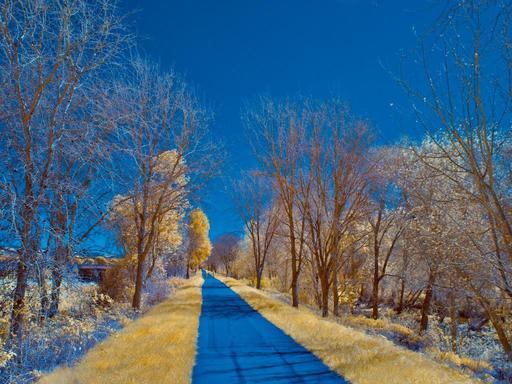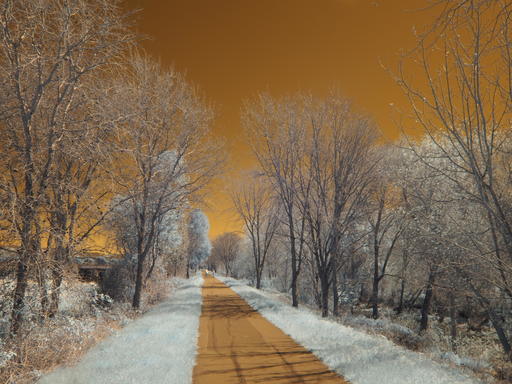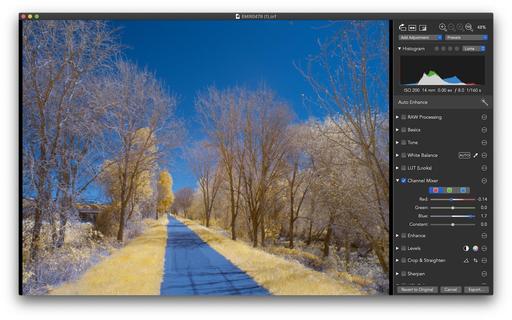Often referred to as the Ultra Color filter because it lets more visible light in, the 590NM filter on a converted camera is one of my favorites. It produces vibrant colors where leaves glow golden yellow and skies are bright blue.
 Bike trail photographed with a converted Olympus E-M10 III, 14-42mm Olympus EZ zoom, Kolari 590NM filter, processed in RAW Power. Photos and illustrations by Derrick Story.
Bike trail photographed with a converted Olympus E-M10 III, 14-42mm Olympus EZ zoom, Kolari 590NM filter, processed in RAW Power. Photos and illustrations by Derrick Story.
There are a couple scenarios where you can work with this slice of the light spectrum. The easiest is to buy a starter kit, such as the Kolari Pocket Full-Spectrum Camera with Infrared Filter Starter Kit for $229. The 590NM is included in the kit. You can also have one of your existing digital cameras converted, or you can buy a converted camera in the lens mount of your choice.
Once you have your camera, and a 590NM filter mounted on it, then make a custom WB setting on a gray card, sidewalk, or similar toned surface. Now you're ready to shoot.
When you first look at the images, they will have a color scheme that looks something like this.
 Original file before processing. The Channel Mixer is the key adjustment required for conversion.
Original file before processing. The Channel Mixer is the key adjustment required for conversion.
This is not the final product. The image is completed in post production using an editor that has a Channel Mixer. You can use Photoshop, RAW Power, or Pixelmator Pro to name a few. This is where you do what we call the "Red/Blue Swap".
 Editing the IR image in RAW Power using the Channel Mixer.
Editing the IR image in RAW Power using the Channel Mixer.
The starting point is to go to the Red Channel and set the Red Slider to 0 and the Blue Slider to 100. Then you go to the Blue Channel and set the Red Slider to 100 and the Blue Channel to 0. Then you do a second pass where you further adjust the sliders to taste. Notice in the illustration above that I have in the Red Channel Red set to -0.14 and Blue to 1.7. That's how I got the effect that I wanted.
I worked with with B&W IR photography for years before trying my hand at color. In a previous article titled, B&W Infrared Photography with an R72 Filter, I talk about that process with a regular digital camera. But now that I've ventured into color work, I love having the option to shoot with either look, with 590 being my favorite.
Product Links and Comments
There are product links in this article that contain affiliate tags. In some cases, depending on the product, The Digital Story may receive compensation if you purchase a product via one of those links. There is no additional cost to you.
You can share your thoughts at the TDS Facebook page, where I'll post this story for discussion.











